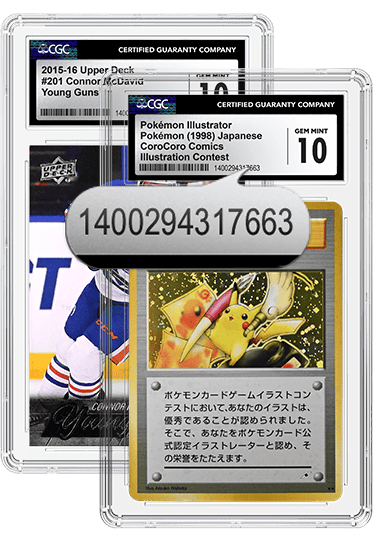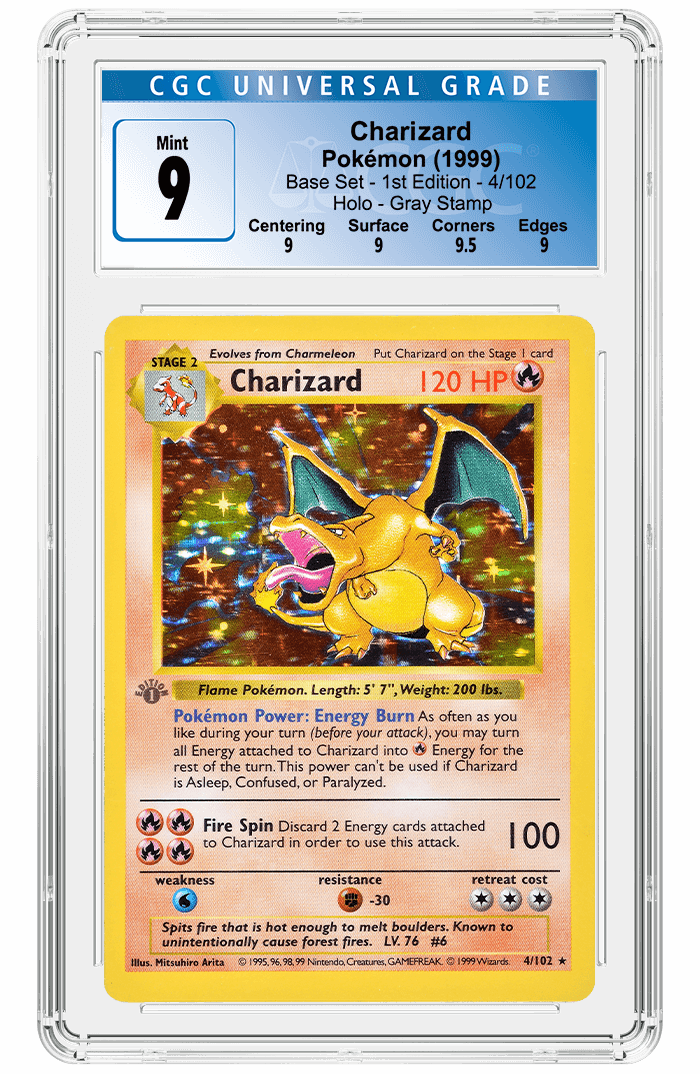Exploring the Most Expensive Black Lotus Cards
Posted on 7/13/2022
When it comes to Magic: The Gathering cards in the collector's marketplace, there are the Black Lotus cards and then there is everything else. It is perhaps the most iconic Magic card. The most expensive Black Lotus cards consistently rank at the top of collectors' wishlists.
Of course, many other cards are sought after and prized by collectors and investors. This is especially true of cards from the original two 1993 print runs: the Alpha and Beta sets. But values for the Alpha and Beta Black Lotus cards dwarf the others. While many early cards can sell for tens of thousands of dollars, it is not uncommon for the most expensive Black Lotus cards to sell for hundreds of thousands of dollars.
Part of this strong collector appeal is due to the iconic artwork. The blooming lotus flower is undoubtedly one of Magic's most beautiful designs. With intricate details and vibrant colors, fans as far back as 1993 recognized the strong visual appeal of the Black Lotus cards.
For those actually playing the game, the Black Lotus is one of the most powerful cards ever, providing three mana of any one color when tapped. There is also the historical significance of the Black Lotus. As one of the original cards from the Alpha set, it represents the early days of Magic and is now a piece of gaming history. Given the limited print run of the Alpha set, there were no more than 1,100 original Black Lotus cards ever in circulation. This has created a huge demand for a very rare card.
Today, you can add investment potential to the list of reasons why the Black Lotus Magic card is so highly prized. Historical value, rarity and iconic status make for a card that continues to break sales records. And for those without a six-figure collecting budget, there are later printings that are more affordable, yet are still valuable.
Investment Potential for Black Lotus Cards*
Long-term trends in the value of Black Lotus cards are generally a good indicator of whether any particular card is a good investment. However, collectors and investors should always remember that the collector’s market fluctuates frequently. The prices discussed below have been sourced from news sites around the web and MTGGoldfish, a price tracker for Magic: The Gathering cards. These sources are constantly updated, so it is important to be aware that prices can change on any given day.
Here's a review of the most expensive Black Lotus cards and how much they're currently selling for.
1993 Magic: The Gathering Black Lotus – Limited Edition (Beta) Artist Proof ($815,000)
As the first ones on the market, Black Lotus cards from the Alpha and Beta print runs are naturally the ones most prized by collectors. But some of the largest prices fetched at auction have been for cards that weren't ever intended to be sold publicly: Artist Proof cards.
An Artist Proof is an early mockup of the final printed card's appearance. They allow the artist to evaluate how their work appears in print, if the colors match their intention and if sufficient detail is visible on cardstock. In many scenarios, an Artist's Proof would be approved or rejected and then thrown away. However, at least a few Black Lotus Artist Proofs have survived and made their way into the hands of collectors.
A Black Lotus proof is instantly identifiable by its completely blank card back. Fortunately, the front looks identical to the standard issue card. The extreme rarity of the proofs and signatures from artist Christopher Rush has made Artist Proof Black Lotus cards a record-setter on the auction block.
In March 2023, a CGC-graded 8.5 example sold for a record $615,000. The year prior, musician Post Malone said he paid $800,000 for a Rush-autographed Artist Proof. Although there's no further documentation of Malone's purchase, the astronomical sales figure seems feasible, especially if the card was in Grade 9 condition or higher.
While Artist Proofs are rare and unique, some collectors and investors will prefer production cards that were initially in general circulation. For Magic collectors, this means the Alpha and Beta print runs.
1993 Magic: The Gathering Black Lotus – Alpha ($540,000)
Only a few days before the March 2023 sale of the Grade 8.5 Artist Proof Black Lotus card, a Gem Mint 10-graded card from the Alpha print run sold at auction for $540,000. Like the proofs mentioned above, Rush also signed this card.
As a production card meant for general circulation in the market, the Alpha doesn't have the blank back of the artist's proof. It is also the "original" card that fans would have purchased in 1993, which adds to the appeal of this and all Alpha cards.
As only 1,100 Black Lotus Alpha cards were created and only seven are known today to be in Gem Mint condition, the results of this auction were not too surprising. Another Gem Mint example, also signed by Rush, sold at auction in January 2021 for just over $511,000, which helped to establish the general value for a high-grade Alpha card at auction.
1993 Magic: The Gathering Black Lotus – Beta ($81,000)
The original Alpha Magic cards were released in August 1993 and were an instant hit for Wizards of the Coast. The Beta set followed in October to help meet the demand of the popular trading card game. There were roughly 3,000 Beta Black Lotus cards in this print run. That's obviously more than was printed for the Alpha sets, but it is still a very limited print run.
While the Alpha Black Lotus card will always be number one in collectors' hearts, the Beta version is still early in Magic history and rare enough to draw high prices. However, there are so few sales of this card in a high-grade condition that it is difficult to say how a Gem Mint sample will fare at auction today.
MTGGoldfish, which tracks sales data for Magic cards, shows the Beta selling for up to $81,000. Additionally, a Grade 8 card sold at auction in 2022 for just under $12,000. Given the astronomical prices realized for the Alpha card, a Gem Mint Beta card could easily fetch six figures the next time one comes available at auction.
1993 Magic: The Gathering Black Lotus – Unlimited Edition ($46,000)
The Magic: The Gathering Unlimited Edition appeared in December 1993 and served as the second edition of Magic's core set. It features the same 302 cards as the Beta set. In fact, the Unlimited Edition is very similar to the Beta print run, other than the beveled edge on the Unlimited card borders.
Given the "fancy" aesthetic of the Unlimited Edition, some collectors might prefer to pick up a Black Lotus card from this set. Other popular cards like Ancestral Recall and Time Walk tend to also do well with collectors today.
As another early example of the Black Lotus card, an Unlimited version can also fetch high prices. MTGGoldfish reports sales of just under $46,000 for this card.
Check out this article for other MTG cards that have seen incredible sales as the most expensive Magic cards.
How Are Magic Cards Graded?
Trading card certifiers use a universal numeric grading system that all dealers, appraisers and collectors recognize. The grades range from ungraded to a Pristine 10.
Grades are calculated according to the following standards:
Pristine 10: The best a card can be, with Gem Mint scores across all four criteria: surface, edges, centering and corners. These cards are perfect even when viewed under 10x magnification.
Gem Mint: Perfect, with bright colors, perfect centering, undamaged edges, sharp corners and no condition or manufacturing issues or flaws.
Grade 9.5: A Near Mint card with one minor flaw or condition issue.
Grade 9: Excellent, with a few minor condition issues or flaws.
Grades 8 and below: These cards are graded lower because of production flaws or condition issues.
Ungraded: Never been graded.
Raw: Just removed from its packaging and new to the market.
Black Lotus Magic card values are determined according to three components: condition, rarity and collector demand. Of the three, collector demand is the most difficult to predict because it can change at any time. A once-desirable card may plummet in value if collectors lose their interest. On the other hand, a more typical card may catapult if collectors suddenly rediscover that player. Escalating auction prices due to bidding wars can also cause card prices to spike. A rare card in Gem Mint condition may be challenging to sell because it commands a premium price, while a lesser-grade card that's more common may suddenly find favor with fans and soar in price.
Before investing, remember that many variables determine a Magic card's value. Obtaining a certified grading is one of the most important things you can do to add value to your cards.
Having your cards graded can make the difference between a particular card being valued for a few dollars and quite a bit more. Grading helps ensure which card you have so that you can accurately assess its value. The grading process also preserves the condition of your card for maximum value. For serious collectors and investors, grading is an essential step for maintaining the long-term value of any given card. To learn more about the grading process for your Magic: The Gathering cards, visit the CGC site today.
*Any mention of "investment potential" is for entertainment only and should not be construed as investment advice. The Certified Collectibles Group does not provide investment advice and is not liable for any buy, sell or trade decisions made by any parties.
Stay Informed
Want news like this delivered to your inbox once a month? Subscribe to the free CGC eNewsletter today!

